
Labeled Crayfish Diagram
Internal anatomy of a crayfish: edible freshwater crustacean, with pincers on the two forelegs. Encephalon: site of the mental functions of a crayfish. Stomach: part of the digestive tract between the esophagus and the intestine. Heart: blood-pumping organ of the crayfish. Gonad: sex gland of a crayfish.
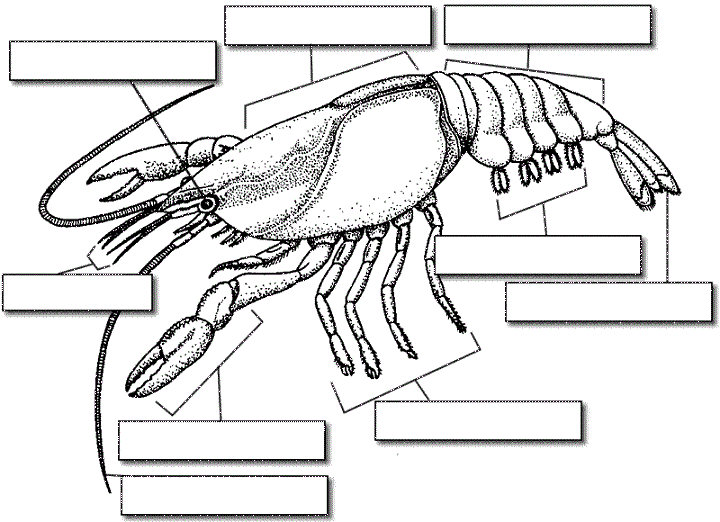
Crayfish External Anatomy
The crayfish belongs to the Phylum Arthropoda, which includes organisms having an exoskeleton, jointed appendages, and segmented bodies. The word "Arthropoda" literally means "joint foot." The anatomy of this animal can be studied as external and internal anatomies. External Anatomy of Crayfish Crayfish External Anatomy

Solved Subphylum Crustacea Crayfish dissection Obtain a
Crayfish are arthropods, which are the most diverse and abundant animals on earth. There are more species of arthropods than all animals combined. Arthropod characteristics: Jointed appendages - bend to move in specific directions and specialized for specific jobs

crayfish. arthropods arthropods activity Crayfish, Biology, Arthropods
Social Studies. World Languages. This video details the external anatomy of a crayfish and compares it to other arthropods.
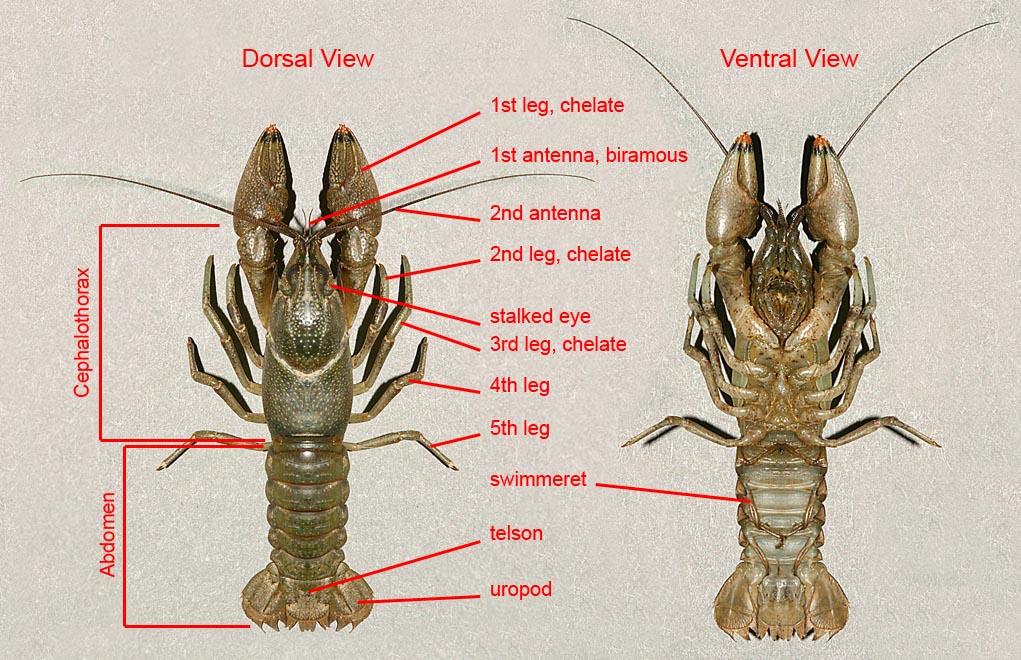
Crawdads in NC Lucky Sci
1. Place the crayfish with its dorsal (top) side up in a dissection tray. Use the diagram below to locate the cephalothorax and the abdomen. The carapace, a shield of chitin, covers the dorsal surface of the cephalothorax.

Dorsal view of generalized male crayfish (Redrawn from Hobbs 1976
External Anatomy Step 1 Place the preserved crayfish in a dissecting tray. Step 2 Note that the body of the crayfish is divided into three parts: the head, the cephalothorax, and the abdomen. Step 3 Head - Identify the compound eyes on the rostrum portion of the head. Step 4
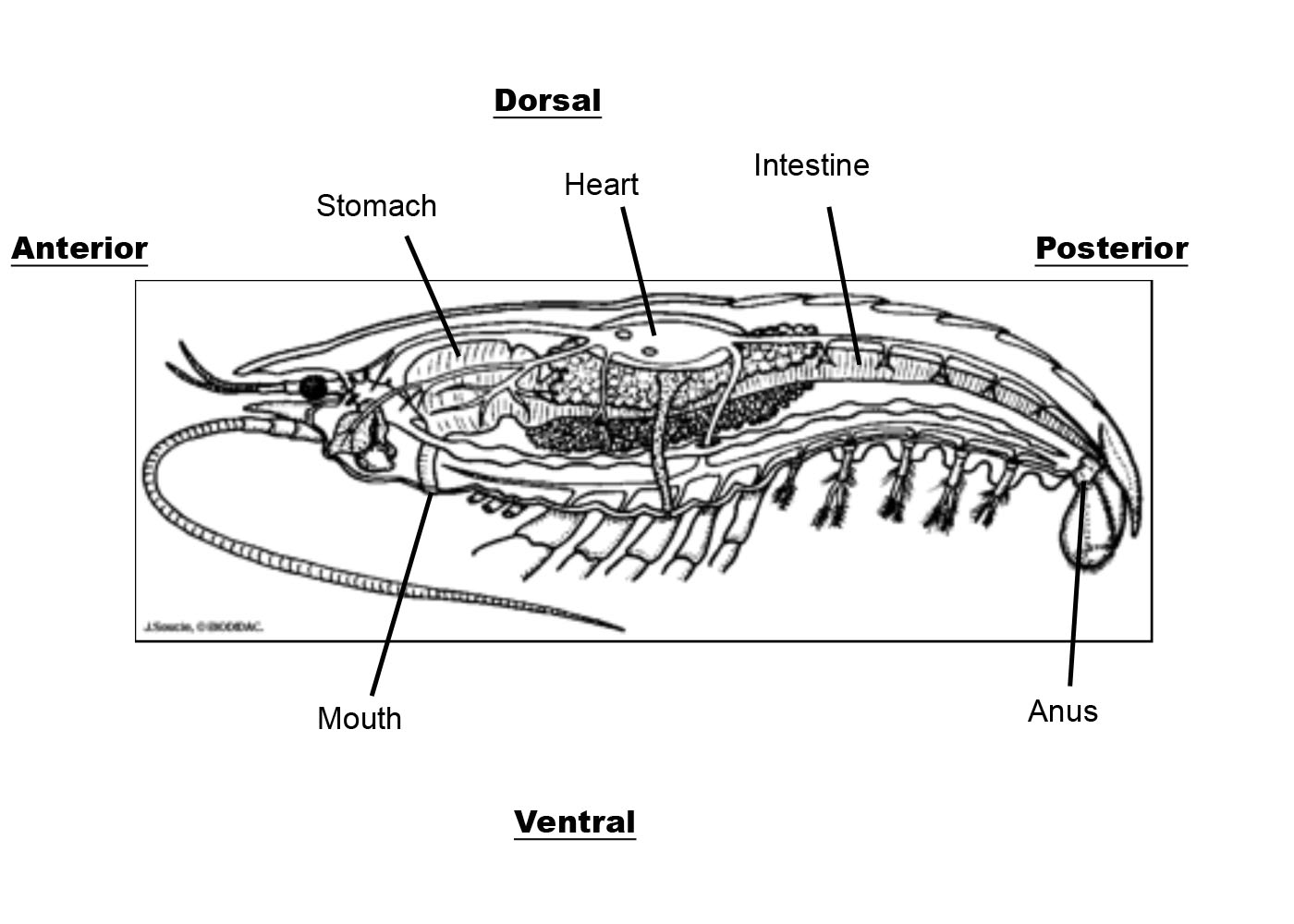
Labeled Diagram Of A Crayfish
Objectives: Students will be able to identify types of crustaceans and provide examples. Students will be able to describe the basic biology of aquacultured crustaceans. Students will be able to identify key anatomical features of common crustacean species.
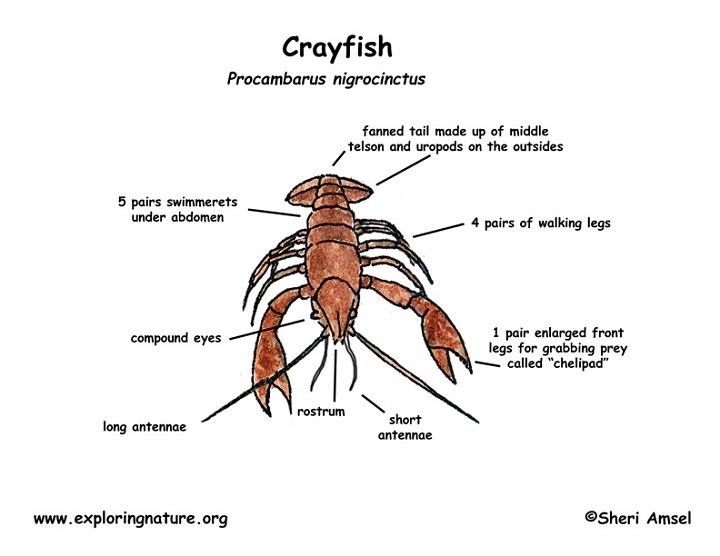
Crayfish Diagrams 101 Diagrams
Answers EnchantedLearning.com Label Crayfish External Anatomy Crayfish Printout More on Crustaceans Read the definitions below, then label the crayfish diagram. Abdomen - The abdomen is the segmented tail area. The swimmerets, telson, and uropods are attached to the abdomen. Carapace - The protective shell (exoskeleton) of the cephalothorax.

Crayfish Diagrams 101 Diagrams
In this Biology lab, we will take a close look at the external and internal anatomy of a freshwater aquatic invertebrate—the crayfish. As we study the anatom.

Crayfish Diagrams Printable 101 Diagrams
Arachnids breathe via book lungs. More information on arachnids will follow in a subsequent lab. Subphylum Crustacea ( crusta = crust, rind) includes crayfish and lobsters, crabs, pillbugs, and several other groups. They have gills, thus terrestrial pillbugs need to maintain a 100% humidity environment around their gills to be able to "breathe."

Crayfish Internal Anatomy Shrimp and Snail Breeder
The purpose of this lab activity is to help you learn the anatomy of a crayfish and give you a better understanding of the anatomy of invertebrate animals in general. After completing this dissection, you should be able to: Correctly identify the locations involved in the dissection procedures, and

Crayfish Dissection Diagram
1. The cephalothorax The cephalothorax (cephalic+ thoracic) consists of the cephalic (or head) region and the thoracic (or chest) region. In its turn, the chest also consists of 3 segments that can be seen only from the ventral side of the crayfish where each segment contains a pair of appendages that are called walking legs.

5957242b2b37e26f90f877ab6ce8c0damarinebiologyaquaponics.jpg (720×
As shown in the diagram below, the crayfish body is divided into two main parts: cephalothorax; abdomen; The cephalothorax consists of the cephalic (or head region) and the thoracic region. The rostrum is the most anterior part of the cephalic region of the cephalothorax and will form what is commonly known as the "brow ridge". The part of the exoskeleton that covers the cephalothorax is.
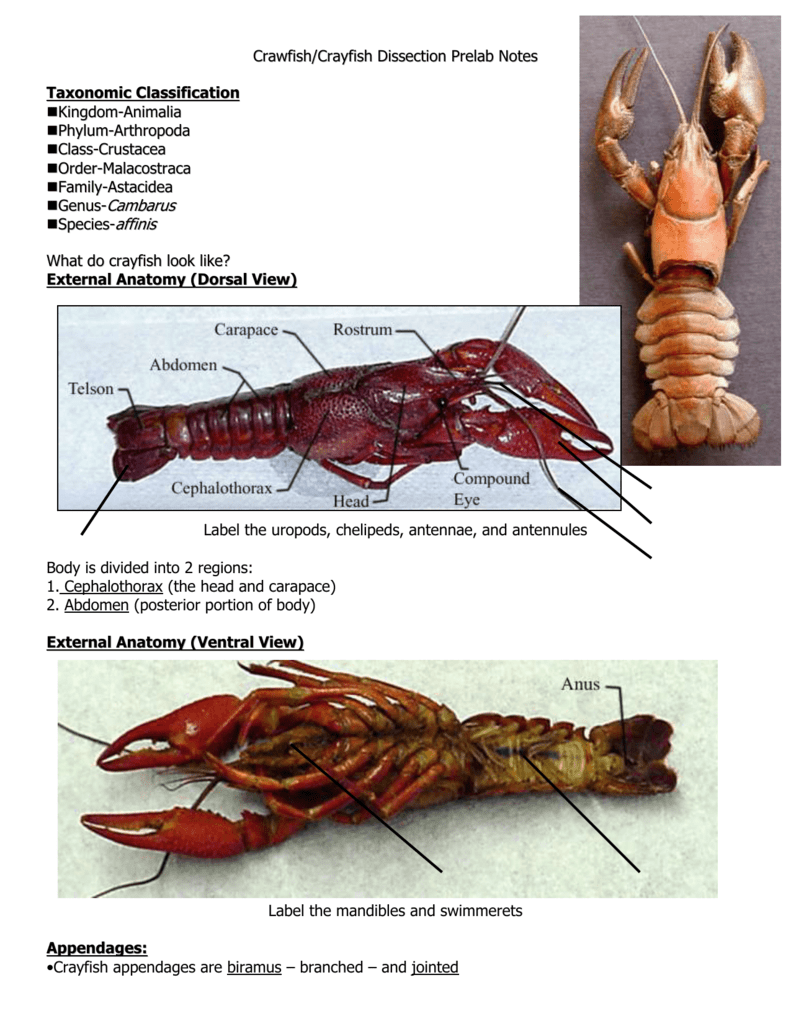
Internal Anatomy Crayfish Anatomy Book
Day 1 I. Abdomen - Ventral View (Day 1) top Place the crayfish supine (ventral surface up) on the dissecting tray and DRAW the following: Telson (What is the telson's function?) Uropod (Describe the location of the Uropod to the telson. How do the add to the telson's function?)

crayfish anatomy diagram
The External Anatomy of the Crayfish . Google Doc. Crayfish are freshwater crustaceans that belong to the Phylum Arthropoda (subphylum Crustacea). They are also known as crawfish, crawdads, and mudbugs. They can be found in freshwater streams or even in muddy ditches.. Label the diagram as you locate structures using the abbreviations. 8.

Lesson 5 The Crayfish (Crustacean) C.S.W.D
Most adult crayfish are about 7.5 cm (3 inches) long. Among the smallest is the 2.5-cm-long Cambarellus diminutus of the southeastern United States.Among the largest is Astacopsis gouldi of Tasmania, which may reach 40 cm in length and weigh about 3.5 kg (8 pounds).. Crayfish, common in streams and lakes, often conceal themselves under rocks or logs.